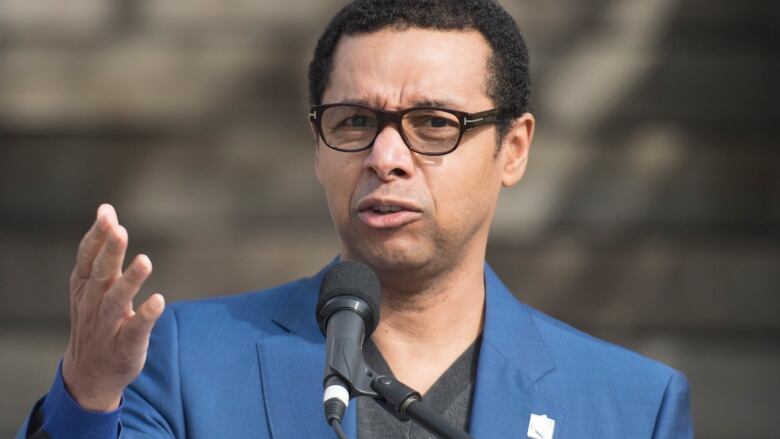Waiting lists dwindle at Quebec's youth protection agency, but is that a good sign?
Minister trumpets a 'net improvement,' but union fears pandemic confinement has hindered reporting

The wait for youth protection services in Quebec is at a historic low, and junior health minister Lionel Carmant says credit should go to the government's recent $65 million investment into the system.
But experts and union officials believe the decrease is more likely due to the pandemic, which has closed many of the usual facilities where children in need of help are identified.
With the exception of Nunavik, the Montéregie and the Eastern Townships, waiting lists for youth protection services in the province are empty, Carmant said at a news conference this weekend.
Carmant attributed the development to a funding increase in the in Quebec's 2019–2020 budget, which included $47 million to hire an additional 600 case workers.
But Université du Québec en Outaouais professor Marie-Ève Clément, who holds the Canada Research Chair in Violence Against Children, said empty waiting lists were to be expected.
Restrictions imposed due to COVID-19 mean there are fewer opportunities to observe and report potential cases where protective care may be necessary, she said.
In a 2019 report, the Director of Youth Protection (DYP) said 20 per cent of its cases were first flagged in schools, 34 per cent in community organizations and 10 per cent in the community.
"All of those sources are now unavailable," Clément said.
'Good initiatives,' but union says more needs to be done
Steve Garceau, the national representative for the APTS union, which represents social service workers, also named teachers, community organizers and staff at CLSCs as crucial parts of the protection system that have effectively been sidelined by COVID-19 restrictions.
Garceau said the union's research shows reports have declined 30 per cent around the province since the pandemic began.
Carmant acknowledged he is "very worried" that the DYP is not hearing about the province's most vulnerable children.
But he added that the lack of waiting lists now means "when there is a report, it will be dealt with in a reasonable time." And he said various changes made at the DYP had led to a "net improvement in the situation."
Carmant noted various programs the government has implemented to address concerns about the safety of children during the pandemic, including awareness campaigns, flyers sent in the mail and better contact between the DYP and schools and community organizations.
These are "good initiatives," Garceau said, but added that Quebec still needs to do more, especially for the most vulnerable children.
At this point, students in Montreal won't return to school until September at the earliest, he observed. "That's a long time, very long, for a child in a vulnerable situation" to be out of contact with people who can help, Garceau said.
With files from Simon Nakonechny

